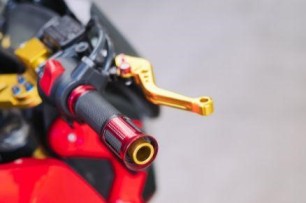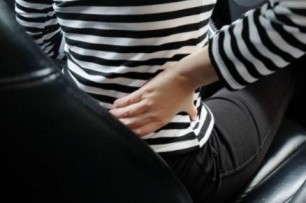General Insurance Blogs, Articles & Updates by - Magma HDI
Have us call you
- RENEW YOUR POLICY
- BUY NEW POLICY

Six practical gifts for any parent they would love
Parenting is tough, but buying an ideal gift for your parents might be even more challenging. What would you gift the people who gave you everything? Is there even a perfect gift for parents? The finest presents are ones that celebrate their hard work and provide them with a much-needed break from daily life. These gift choices are guaranteed to be a success.
Even a tiny present may be a polite way to express your love and gratitude towards them. Owing to internet purchasing, your options are almost limitless. However, this may lead to some significant stress while decision-making.
We are here for your help as we have curated a list of the most fantastic presents for parents.
1. Packing cube set of 6:
This is a packaging set that contains six pieces. Cubes of four different sized bags, one for footwear, and one zippered bag to separate dirty clothes. This could be the perfect gift for people who like to travel and explore around. It is incredibly organised and easy to carry along.
2. The latest Fitbit:
A fitness watch is an intelligent fitness tracking device that also serves as a watch. It keeps track of your daily routine, steps, burned calories, hourly activity, heart rate, and more. This gift could inspire your parents to start working out and look after their health.
3. A vacation:
One of the best gifts for anyone is a little vacation to cherish priceless moments. A trip that takes away all their stress and worries. Some alone time with nature is what a parent needs after looking after everybody in the family. So, go ahead and book a lovely trip to a beautiful destination.
4. Neck and Back massager:
Growing up, you may have been a pain in the neck (literally!). This is your chance to make up for it by giving your parents an electric neck and back massager. Despite the age, one could always have the benefits of massages whenever they want.
5. Gardening kit for organic kitchen herbs:
A one-of-a-kind gift for people who love to cook with fresh home-grown ingredients. Gardening takes up a lot of your time, but the outcome is worth every second you invest. This is also an excellent hobby for retired parents.
6. Health insurance:
Health insurance is the most valuable gift you can give your parents. They never prioritise themselves, so you have to do it for them. All you have to do is look for the best health insurance in India for parents and purchase it to secure their health and ensure their happiness.
There's no doubt that the most important people in your life deserve nothing but the finest, no matter what the occasion. Nonetheless, when it's time to find the right present for them, it may be tough to think of something as unique as them.
That's where our list comes in. Picking gifts for parents will always leave us perplexed for a while. However, something practical and functional is an excellent choice. We hope this list guides you in choosing the perfect gift for your parents.
Click HERE To get the best health insurance in India for parents, click
Disclaimer: The information provided above is for illustrative purposes only. To get more details, please refer to policy wordings and prospectus before purchasing a policy.

Learn how to slow down your bike after an unexpected brake failure
We can rave about the look and mileage of our bike's engine, but, at the end of the day, it all comes down to how efficient it is on the road. Driving in a country like India, where the roads and the path walks have no clear distinction, we might encounter various instances where we have to dodge a huge pothole or the kids playing on the street. So, having an efficient brake system is vital to ensure the safety of yourself and others.
The properties, characteristics, and behaviour of brakes do not always remain the same. These can be influenced by temperature, operating habits, operating durations, and effects of interconnected parts, sometimes leading to brake failure.
In situations where you come across a brake failure, being prompt on your toes will help you avoid any accidents.
1. Maintain your calm:
It's common knowledge that maintaining your composure under pressure helps you navigate any problem. The same is applicable for the time that you are on the road. If possible, taking your bike to a less busy road should be the first step to avoid crashing into people or vehicles.
2. Do not turn off the engine:
Your first instinct could be to turn off the engine and let the bike stop, but this can be extremely dangerous. You need to control the situation to avoid traffic crashing into you. So having a constant acceleration in this situation can prevent a crash.
3. Stick to the road and not the sides:
Without the brakes, your bike will be difficult to manoeuvre. Sticking to the sides might present you with uneven roads. Instead, wait for the bike to slow down before pulling over to the side of the road. Only under hefty traffic conditions should you consider going to the side of the road while your bike is still retaining speed.
4. Use your gears:
Surprisingly, gears can assist you in slowing down your bike in a situation where brakes aren't responding. You need to be alert and immediately start lowering your bike's gears. This will create a mechanical resistance from the engine opposing the motion, causing the bike to slow down. Using this method can help you control the bike and prevent the situation from escalating. Once your bike slows down, you can pull it over to a safe place and then shut the engine.
5. Use your horn:
Many times, we come across people relentlessly honking their horns in traffic jams. While that might sound annoying in most cases, do not shy away from alerting people on the road. Since they are not aware of your situation, it is best to attract attention and to be careful.
These are some things that you can focus on if your brakes fail. Road safety is paramount whether you are driving or a pedestrian. Be alert while handling the bars, focus on the road, and resist overspeeding.
Regular check-ups and servicing ensure both you and your bike are covered. Having bike insurance can add value to your experiences. So, consider getting bike insurance online to protect you against damages, third-party legal liability cover, and 24/7 assistance for emergencies.
Click HERE to buy bike insurance online.
Disclaimer: The information provided above is for illustrative purposes only. To get more details, please refer to policy wordings and prospectus before purchasing a policy.

Six best ways to avoid backaches during car journeys
Planning impromptu road trips is always a great way to take some time off and have fun. These days, people like to travel with ease and comfort, so road journeys have become the ideal mode of travel during vacations. However, continuous driving can become uncomfortable and cause various back troubles like backaches, stiffness, numbness, discomfort, nausea, etc.
In this blog, we will discuss the six best ways to avoid backaches during car journeys so you can enjoy your trip to the full extent.
1. Comfort:
Make sure that you are comfortable from the beginning of your trip. Do not keep purses, watches, etc., in your back pocket as it might disturb the alignment of your spine, resulting in discomfort or backache. If you are driving, sit closer to the steering wheel instead of bending or messing up your posture to reach it.
2. Alignment:
Keeping your back aligned to the seat provides comfort while driving. You can add comfortable gear and equipment to help you maintain your back alignment. Roll up a towel and keep it between your back and the seat to maintain the curve of your posture.
3. Smooth rides:
Replace any worn tyres or parts that can cause jerks on the road. Make sure that your ride is as smooth and comfortable as possible. You can use a car seat cushion to help with your sciatica pain.
4. Breaks:
Road journeys require you to sit in the same positions for a longer duration of time which can cause numbness in your legs and back. To avoid the risk of backaches, make sure that you take breaks in the regular intervals of your trip and get out of your car to stretch your whole body. Move around a bit to ensure there is no stiffness.
5. Cold pack:
If you have pre-existing backache issues, it would be good to bring a cold pack for the journey. Backaches can trigger inflammation. Applying cold packs helps reduce inflammation and calm sore and numb tissues. To sustain the temperature of your cold pack, you can carry a cooler in your car and keep reusable ice packs in it.
6. Warmers:
Some people have found that seat warmers help relax the muscles by warming up the lower back. You can use reusable heating pads in place of a pillow that provides lumbar support, heat wraps that last for longer durations, etc., for a comfortable road trip experience without the risk of severe backache.
To avoid backaches, you must take good care of your posture during road journeys. Excessive strain on your body, especially the back, due to continuous driving for hours can affect your physical wellbeing. Follow the above tips to make driving comfortable and less exhausting.
Consider buying car insurance to avoid hefty expenses in case of any mishaps. Reliable car insurance with an additional feature of Personal injury protection (PIP) will cover all the expenses, including garage costs, medical bills and provides financial security under all circumstances.
Click HERE to know more about car insurance.
Disclaimer: The information provided above is for illustrative purposes only. To get more details, please refer to policy wordings and prospectus before purchasing a policy.

Learn how to control your bike on slippery roads or slopes
While riding a bike, it is necessary to know when to apply the rear or the front brakes. Randomly using both or either of them could lead to an accident.
Factors like maintaining your balance while driving or taking turns hold significant importance. Many people know how to ride a bike, but not everyone may be sure about controlling the bike in severe circumstances on the road. All you need is a little practice with a set of instructions to follow, and you're safe to go.
For now, we'll focus on how you can control your bike on slippery roads. This is because not everyone knows how to manage their balance, maintain a stable speed, and apply brakes on wet or slippery roads.
1. Brake force:
While you're driving on any conditional road, it is necessary to know all the braking techniques beforehand. For example, if you're driving at 20-30 miles per hour, you can use the rear brake and apply the same. But, it would help if you pressed it gently without much pressure. Applying too much pressure may cause you to end up slipping on the road.
Slippery roads are unsafe for driving. No matter what speed you're driving at, you can apply both brakes at the same time but with the same amount of pressure. However, pressing either one with higher intensity than the other could be risky.
2. Tyre gripping:
This is not well-known among most bike riders, but it is as important as knowing the braking system. A tyre should have a good number of treads to provide you control over slippery roads. So always make sure to check the grip of the tyres.
If the tyre does not have enough grip and treads, there won't be a layer of protection from the water on the road. A smooth surface can make your tyre straight flat and drastically increase the chances of slipping. Do not forget to check for any punctures or cuts on the tyre before heading for your trip.
3. Speed limit:
Many accidents occur because of the driver's negligence towards the speed limits. Managing the overall balance and speed in a car is different from bikes. If you want to stop or slow down, apply either or both brakes with equal pressure. Never slow down instantly. Leave the throttle and apply the brakes only after that.
4. Chain of the bike:
When you're driving on a wet or slippery road, the life of the chain could easily get affected by junk or jamming. In addition, if the chain is not oiled regularly, it could get loose and come off the socket. Hence, ensure to oil the chain regularly.
Driving on slippery or uneven roads can be tricky, so having bike insurance to protect you in any situation is essential. In addition, bike insurance will guarantee financial assistance in case of any damage to your vehicle and help you rest assured. With the tips mentioned above, enjoy your ride in the rain! Drive safe!
Click HERE to buy ideal bike insurance.
Disclaimer: The information provided above is for illustrative purposes only. To get more details, please refer to policy wordings and prospectus before purchasing a policy.


